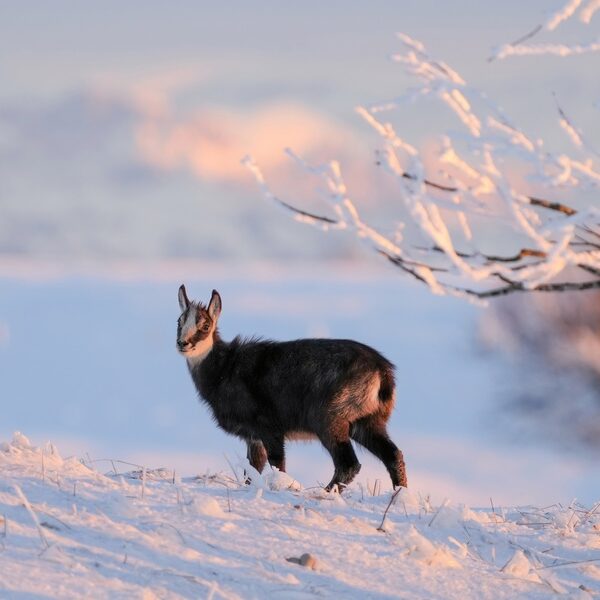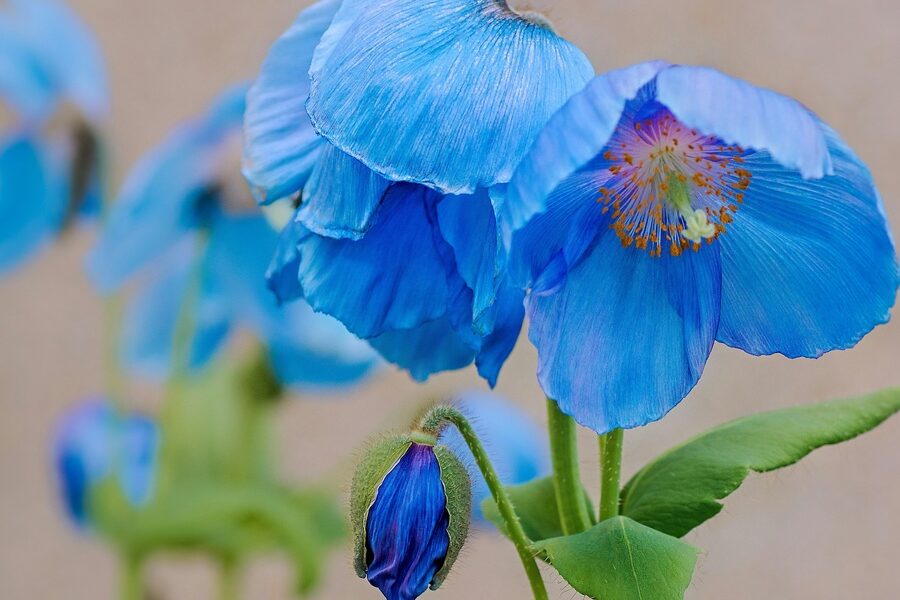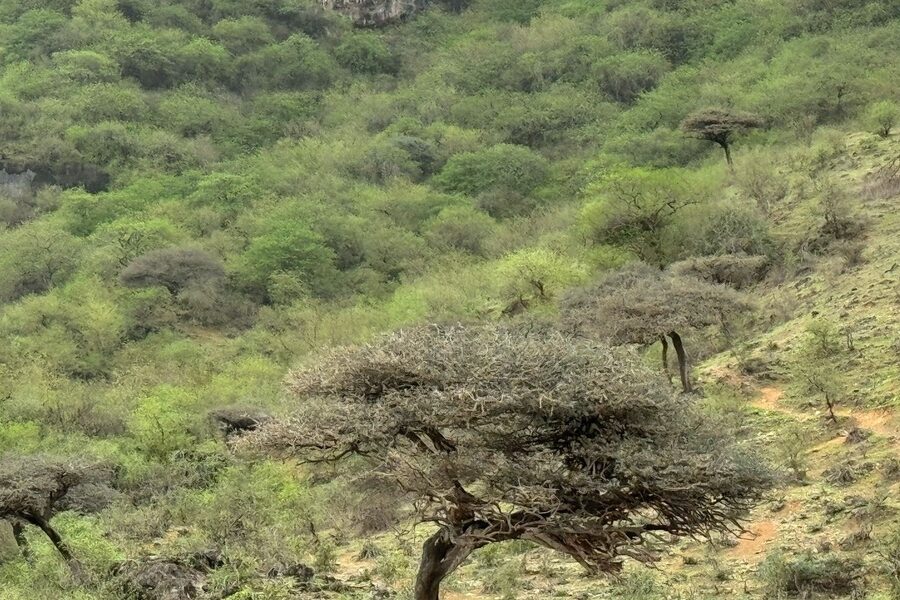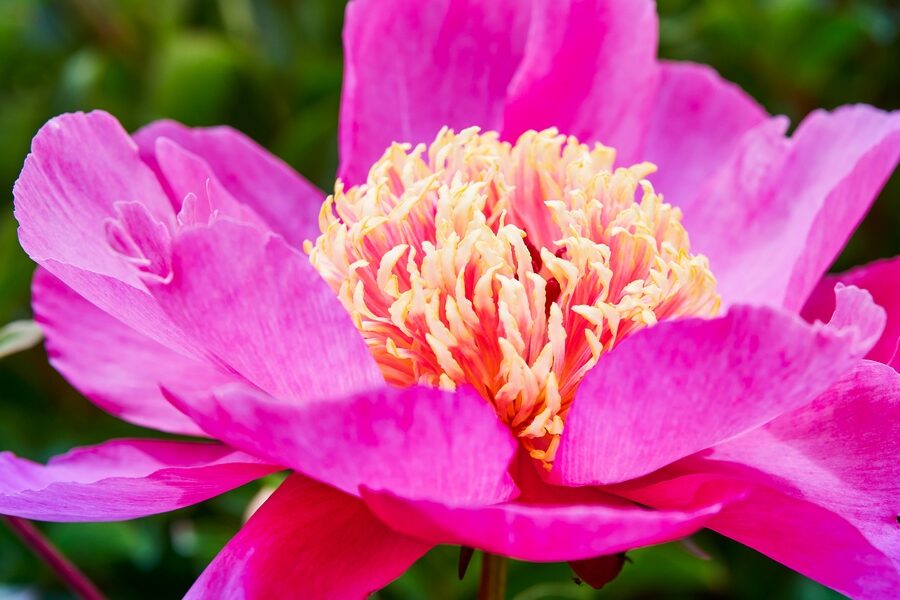Walk a shaded forest trail and you’ll find layers of life underfoot: tiny plants that hold moisture, clean air, and quiet stories about the ecosystem. Noticing differences in color, texture and growth form makes exploring woodland floors rewarding and helps you connect with seasonal and local changes.
There are 27 forest moss, ranging from Bristle moss to Undulate haircap. For each species you’ll find below the organized details: Scientific name, Key ID traits, Habitat & range — set up so you can compare looks, where they grow, and the features to check in the field.
How can I tell similar moss species apart in the field?
Focus on growth form (tufted vs. mat), leaf shape and margins, presence and length of a costa (midrib), capsule shape and orientation, and color when dry versus wet; a 10× hand lens and a small knife to view leaf width and hair points are often enough, and noting habitat (on soil, log, rock) narrows possibilities quickly.
Is it okay to collect forest moss for my garden?
Collecting from wild sites can damage microhabitats and may be illegal; instead, skim small fragments from abundant, non-protected areas only with permission, or buy cultivated moss and recreate the light, moisture, and substrate conditions that match the species’ Habitat & range listed below.
Forest Moss
| Name | Scientific name | Key ID traits | Habitat & range |
|---|---|---|---|
| Feather moss | Pleurozium schreberi | Red stems, feathery mats, pinnate branching | Boreal/temperate forests, N hemisphere |
| Stair‑step moss | Hylocomium splendens | Step‑like pinnate growth, green to brown | Boreal, temperate coniferous forests |
| Common haircap | Polytrichum commune | Tall, star‑topped stems, coarse leaves, upright | Temperate, boreal forests and clearings worldwide |
| Formosum haircap | Polytrichastrum formosum | Dense, erect stems, dark green, toothed leaves | Woodland soils, temperate regions worldwide |
| Broom moss | Dicranum scoparium | Tufted, upright, curved leaves, bright green | Shaded logs, soil, decaying wood; temperate forests |
| Cypress‑leaved plait moss | Hypnum cupressiforme | Flattened mats, branching, soft texture | Logs, bark, soil; widespread temperate forests |
| Sheet moss | Hypnum imponens | Low, spreading mats, glossy green | Deciduous and mixed forests, eastern N America |
| Pincushion moss | Leucobryum glaucum | Round, pale green cushions, dense | Acidic forest soils, temperate regions worldwide |
| Fern moss | Thuidium delicatulum | Finely divided, fern‑like fronds, delicate | Deciduous forests, shaded banks, N America |
| Shaggy moss | Rhytidiadelphus triquetrus | Large, shaggy mats, glossy green | Mixed and coniferous forests, temperate zones |
| Springy moss | Rhytidiadelphus squarrosus | Elastic, springy mats, recurved leaves | Woodland edges, paths, temperate regions |
| Tree moss | Climacium dendroides | Palm‑like, tree‑form shoots, upright | Damp woodlands, shaded peat edges |
| Juniper haircap | Polytrichum juniperinum | Erect, hairy leaf tips, smaller than P. commune | Acidic forest soils, open woodlands worldwide |
| Red bogmoss | Sphagnum capillifolium | Soft, spongey cushions, reddish hues | Peaty hollows, forested bogs in temperate zones |
| Magellanic bogmoss | Sphagnum magellanicum | Thick, cottony cushions, red to brown | Peatlands and forest bogs, circumpolar regions |
| Bug‑on‑a‑stick moss | Buxbaumia aphylla | Tiny green gametophyte, long stalky sporophytes | Decaying wood, moist temperate forests |
| Bristle moss | Orthotrichum lyellii | Small tufts, bristly capsules on bark | Epiphytic on tree bark; temperate forests, coastal |
| Flat neckera | Neckera complanata | Flattened shoots, overlapping leaves, shiny | Moist, shaded bark and rocks; temperate forests |
| Plagiomnium moss | Plagiomnium cuspidatum | Broad, toothed leaves, shiny mat | Moist soil, logs, forest floor in temperate regions |
| Mnium moss | Mnium hornum | Rigid, lanceolate leaves, rounded capsules | Humus, shaded forest soils; temperate regions |
| Fissidens moss | Fissidens taxifolius | Two‑ranked, pocketed leaves, flat habit | Moist soil and rock crevices in shaded forests |
| Thread moss | Bryum capillare | Thin, wiry stems, small rounded capsules | Soil, logs, paths in forests and openings |
| Grooved bog‑moss | Aulacomnium palustre | Tall, pleurocarpous shoots, ribbed stem | Wet hollows, boggy forest floors across temperate zones |
| Mouse‑tail moss | Isothecium myosuroides | Loose, trailing mats, slender stems | Bark and rocks in humid, shaded forests worldwide |
| Rough‑stalked feather‑moss | Brachythecium rutabulum | Spreading mats, rough stems, variable color | Forest floor, banks, shaded lawns temperate regions |
| Undulate haircap | Atrichum undulatum | Tufted, smooth caps, undulating leaves | Acidic woodland soils, temperate regions |
| Tropical pincushion moss | Leucobryum aduncum | Pale, compact cushions, round form | Humid tropical and subtropical forests |
Images and Descriptions
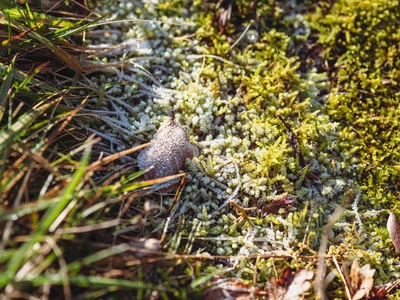
Feather moss
A carpet‑forming moss with feathery shoots and reddish stems, common on acidic forest floors. Helps retain moisture and soil, often first colonizer after disturbance. Visible year‑round; used in terrariums and as indicator of healthy boreal woodlands.
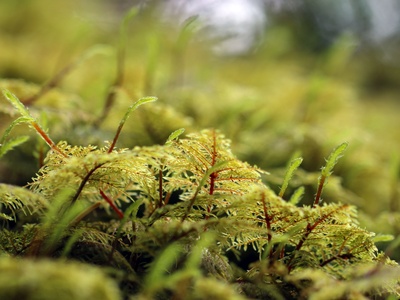
Stair‑step moss
Layered, staircase‑like shoots form long mats across humus and logs in boreal forests. Growth adds annual “steps” each season. Important in insulating soil, storing carbon, and providing habitat for microfauna.
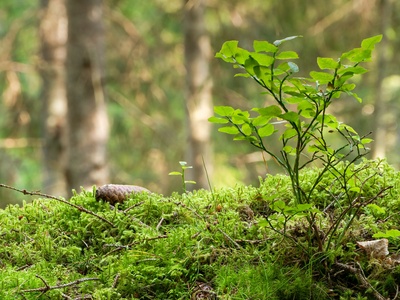
Common haircap
A robust, upright moss with dense, hairy leaf tips and tall sporophytes. Favors humus and well‑drained forest soil. Easily seen year‑round; often used to teach moss structure and as shelter for tiny invertebrates.
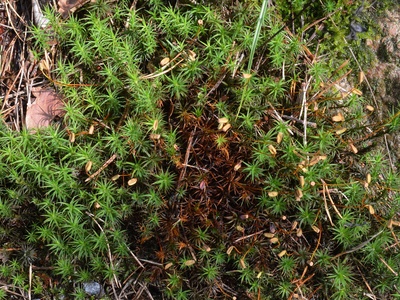
Formosum haircap
Similar to other haircaps but usually darker and larger. Forms dense clumps on moist forest ground and banks, stabilizing soil and shading seedling microsites. Notable for conspicuous capsules in summer.

Broom moss
Tufted cushions with leaves curving to one side, common on logs and humus. Often forms conspicuous green tussocks on forest floor and roots; important in nutrient cycling and providing microhabitats.
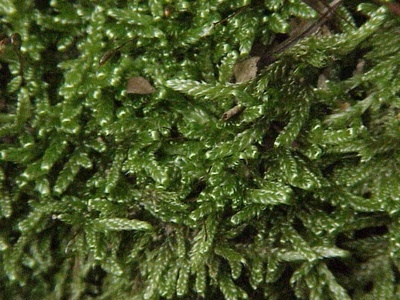
Cypress‑leaved plait moss
A widely distributed sheet moss forming soft carpets on wood and bark. Feathery, interwoven shoots retain moisture and cushion substrates; frequently used as “sheet moss” in horticulture and woodland restoration.
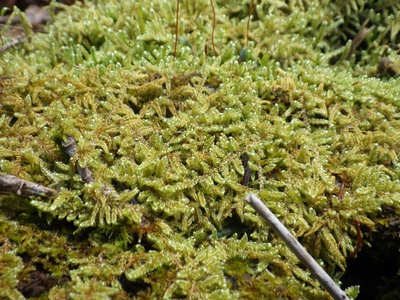
Sheet moss
Forms dense, carpetlike patches on logs and soil in shaded woods. Retains moisture and moderates soil temperature; often used for trail and display moss due to its attractive flat cushions.

Pincushion moss
Forms distinctive pale, domed cushions in pine and mixed woodlands. Holds water well, creating cool, moist microsites; used in decorative plantings and as an indicator of acidic, low‑nutrient soils.

Fern moss
Delicate, tripinnate shoots give a ferny appearance; carpets forest floor and logs. Attractive texture and rapid cover make it important for moisture retention and habitat for tiny invertebrates.
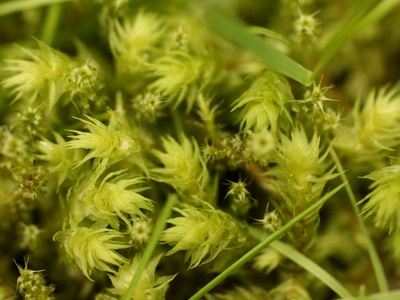
Shaggy moss
Forms thick, irregular mats on soil and logs; recognizable by coarse shoots and large size. Provides cushioning for seedlings, stores water, and supports diverse microfauna in woodland ecosystems.

Springy moss
Creates resilient, spongy carpets on compacted soils and trails in wooded areas. Tolerant of light disturbance; often colonizes compacted forest paths and clearings.

Tree moss
Distinctive “miniature tree” form grows in tufts on moist forest floors and hummocks. Attractive structure provides shelter and contributes to damp microhabitats; often noticed by hikers.
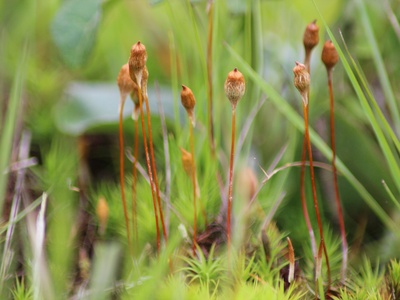
Juniper haircap
A smaller haircap forming dense patches on dry to mesic forest soils and disturbed ground. Conspicuous sporophytes in summer; stabilizes soil and creates microsites for seedlings.

Red bogmoss
A peat‑forming sphagnum in shady bogs and wet woodland depressions. Absorbs and holds large amounts of water, acidifies substrate, and is important in peat accumulation and water regulation.
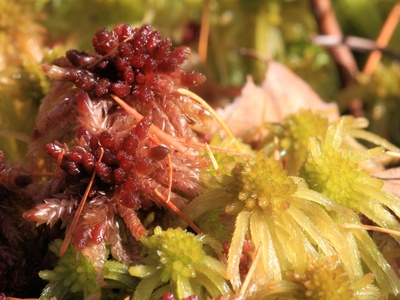
Magellanic bogmoss
A major peat‑forming moss in boggy forested areas. Creates deep, waterlogged mats that sequester carbon and support specialized plant communities; harvested historically for insulation and horticulture.
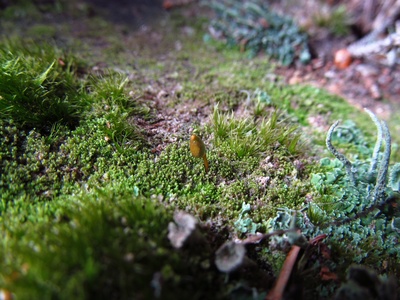
Bug‑on‑a‑stick moss
A minute, cryptic moss where the striking stalked sporophyte is most visible. Prefers rotten logs and stumps; indicator of long‑undisturbed woodland with abundant deadwood.
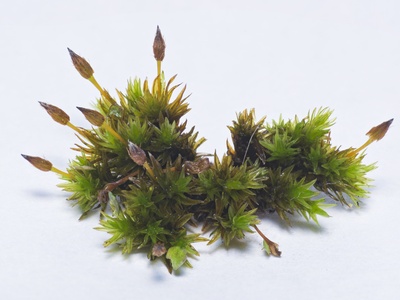
Bristle moss
An epiphyte forming tufts on trunks and branches in humid woodlands. Bristly capsules and clustered leaves help ID it; contributes to canopy biodiversity and nutrient cycling.
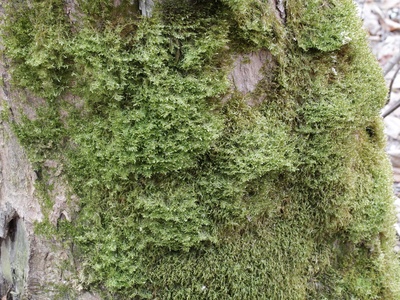
Flat neckera
Forms glossy patches on tree bark and shaded rock faces. Its flattened habit and overlapping leaves are diagnostic; important epiphytic component supporting invertebrates and moisture retention.

Plagiomnium moss
A lustrous, leafy moss forming low mats on damp forest ground and decaying wood. Often shows water droplet retention on leaves; useful for teaching leaf morphology and forest floor ecology.

Mnium moss
A common forest-floor moss with erect shoots and rounded capsules. Prefers shady, moist humus layers and helps stabilize soil while providing nursery microhabitats for seeds and tiny fauna.

Fissidens moss
Small, flattened moss with distinctive folded leaves in a pocketed arrangement. Grows on damp soil and stones in shaded woodland; easily overlooked but ecologically significant in moisture retention.
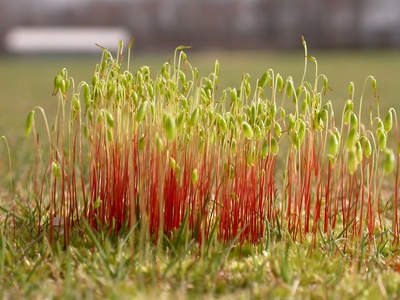
Thread moss
A wiry, fast‑growing moss on disturbed soils and forest paths. Produces many small capsules and tolerates a range of light conditions; often among first colonizers after disturbance.

Grooved bog‑moss
Forms upright, clubby tufts in wet depressions and acidic forest ground. Tolerant of saturated soils, it stores water and contributes to peat formation within forested wetlands.
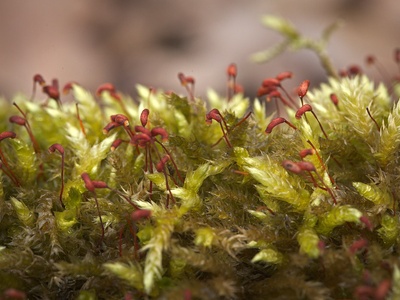
Mouse‑tail moss
A trailing, glossy moss common on trunks and stones in moist woodlands. Its wiry stems and soft appearance support epiphytic communities and microfauna, especially in old‑growth stands.
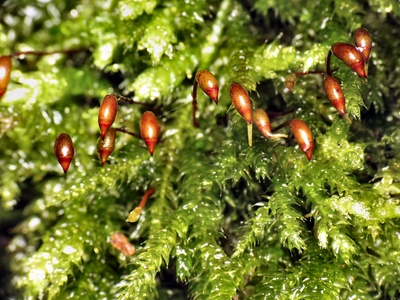
Rough‑stalked feather‑moss
Forms broad, variable mats in shady ground and disturbed woodland spots. Tolerant and widespread, it plays a role in soil cover and moisture retention, often seen near trails and clearings.

Undulate haircap
A tidy tufted moss with smooth, undulating leaves and upright capsules. Prefers acidic, well‑drained soils in shaded woods; contributes to leaf litter decomposition and ground cover diversity.

Tropical pincushion moss
Forms pale, cushiony mounds on forest floors in humid tropics. Excellent water retention makes it a key microhabitat and frequent subject for terrarium moss mixes sourced from forest detritus.

